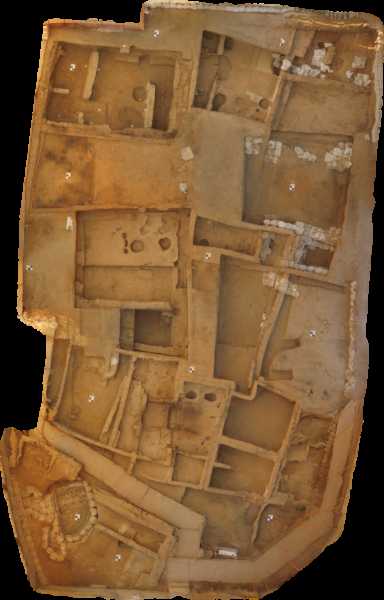Data from: Spatial Analysis and Heritage Conservation: Leveraging 3-D Data and GIS for Monitoring Çatalhöyük Earthen Architecture
Data from: Spatial Analysis and Heritage Conservation: Leveraging 3-D Data and GIS for Monitoring Çatalhöyük Earthen Architecture
About this collection
- Extent
-
13 digital objects.
- Cite This Work
-
Campiani, Arianna; Lercari, Nicola; Lingle, Ashley; Dahabra, Moataz; Dueñas García, Manuel; García, Estrella; Yang, Tristan; Flynn, John; Reps, Christopher (2018). Data from: Spatial Analysis and Heritage Conservation: Leveraging 3-D Data and GIS for Monitoring Çatalhöyük Earthen Architecture. UC San Diego Library Digital Collections. https://doi.org/10.6075/J0WD3XS8
- Description
-
This collection includes a mixed remote sensing dataset made of terrestrial laser scanning point clouds, point cloud comparison data, structure from motion-generated polygonal meshes, and related textures and metadata. It was recorded at the Neolithic site of Çatalhöyük, Turkey under the Çatalhöyük Digital Preservation Project carried out in 2012-2017 by scholars and students from the University of California Merced and Cardiff University. The historic series of North Area and South Area point clouds were documented by means of a Faro Focus S120 time of flight laser scanning during six consecutive field seasons (2012-2017), while the East Mound and West Mound landscape 3-D models were generated from low-altitude photos captured by an unmanned aerial vehicle (drone) in 2015.
The goal of the Çatalhöyük Digital Preservation Project was to capture the current state of the site to comply with UNESCO site management guidelines for conservation and to understand and quantitatively assess the deterioration of its mud-brick architecture through time via 3-D data comparison and geo spatial methods. The analyses of laser scanning data focus on the wall features of eight buildings of the North Area (B5, B48, B49, B55, B64, B82, B114, B119), which were chosen as priority by Ashley Lingle, the Head of Conservation at Çatalhöyük. Point clouds of wall features were segmented and aligned using the open source software CloudCompare. Pairs of perfectly aligned and identically segmented point clouds were then compared using the M3C2 method in CloudCompare to compute differences (standard deviation) and significant change. The differences among aligned and identical features represent the material loss occurred in those walls in 2012-2017. The point clouds were then analyzed in a GIS platform including environmental data logged in the North Area and vulnerability assessment made in situ by the Conservation Team. - Date Collected
- 2012 to 2017
- Date Issued
- 2018
- Principal Investigator
- Analyst
- Contributors
- Funding
-
This work is funded by the University of California Office of the President's Research Catalyst Award for "At-Risk Cultural Heritage and the Digital Humanities",
Grant ID: CA-16-376911, PI: Thomas E. Levy (UCSD), Co-PI: Nicola Lercari (UC Merced), and by an Archaeological Institute of America (AIA) Site Preservation grant. - Geographic
- Topics
Formats
View formats within this collection
- Language
- English
- Related Resources
- Campiani, A., Lingle, A. M, & Lercari, N. (2019). Spatial Analysis and Heritage Conservation: Leveraging 3-D Data and GIS for Monitoring Earthen Architecture. Journal of Cultural Heritage, 2019, 39:166-176. https://doi.org/10.1016/j.culher.2019.02.011
- Campiani, A., Lingle, A. M., Lercari, N. (2019). Spatial Analysis and Heritage Conservation: Leveraging 3-D Data and GIS for Monitoring Earthen Architecture. eScholarship. Retrieved from https://escholarship.org/uc/item/33p4q5cr
- Lercari, N. (2019). Monitoring Earthen Archaeological Heritage using Multi-Temporal Terrestrial Laser Scanning and Surface Change Detection. eScholarship. Retrieved from https://escholarship.org/uc/item/34b4w1rq
- Lercari, N. (2019). Monitoring Earthen Archaeological Heritage using MultiTemporal Terrestrial Laser Scanning and Surface Change Detection. Journal of Cultural Heritage, 2019, 39:152-165. https://doi.org/10.1016/j.culher.2019.04.005
- CloudCompare (version 2.9) [GPL software]. (2018): https://www.cloudcompare.org/
- View all North Area 3D models on an interactive timeline (pointcloud.ucsd.edu): https://pointcloud.ucsd.edu/Catalhoyuk_North_Slider.html
- View all South Area 3D models on an interactive timeline (pointcloud.ucsd.edu): https://pointcloud.ucsd.edu/Catalhoyuk_South_Slider.html
- Çatalhöyük Research Project: https://www.catalhoyuk.com/
Primary associated publication
Software
Interactive viewer
Other resource
 Library Digital Collections
Library Digital Collections
